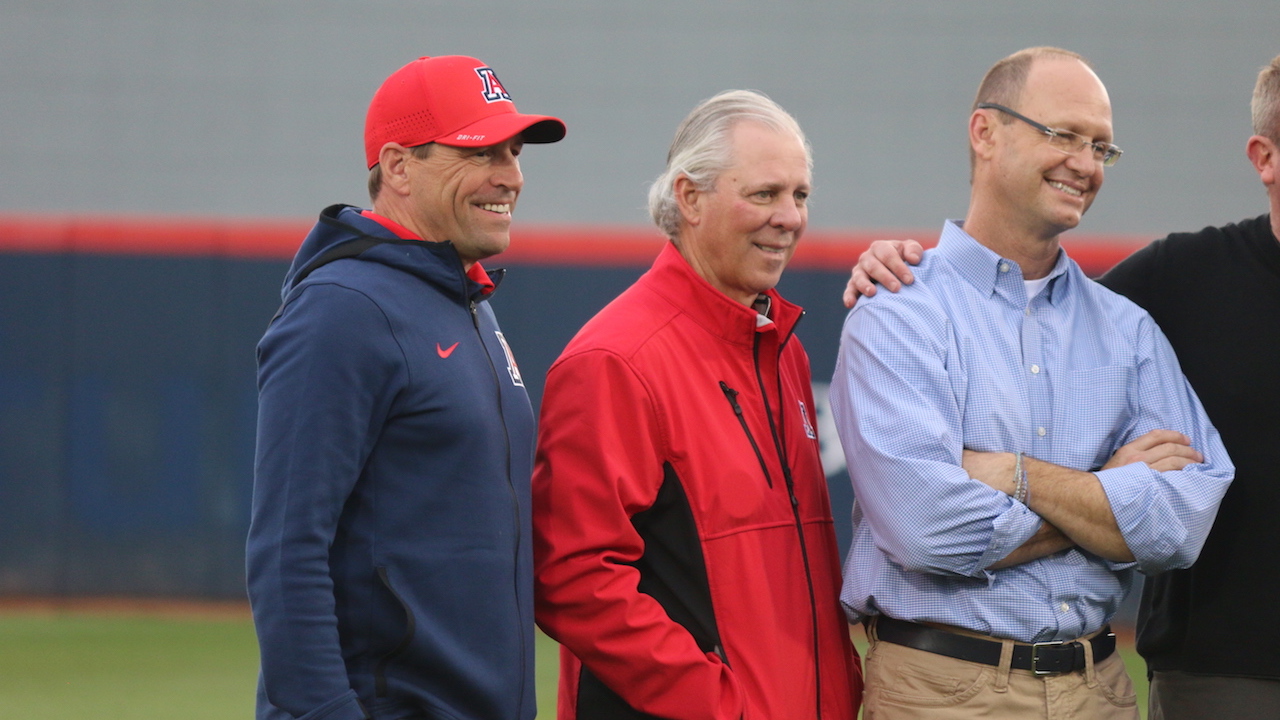Asked about the speculation over the future of the conference, Robbins rejected the notion that schools, including Arizona, would bolt for the Big 12 prior to being presented with a media rights proposal.
“It’s heavily dependent on (commissioner George Kliavkoff) and his team negotiating a good media deal for us to stay competitive,” he said.
“I don’t think anybody wants to leave. Why would you move for a couple million dollars a year more?”
He then compared the situation to competing for “a bronze medal.”
The Big Ten’s media rights contracts with Fox, CBS and NBC, signed in August, will distribute roughly $67 million per year to each campus.
The SEC’s all-in deal with ESPN is expected to spin off at least $60 million per school once Texas and Oklahoma come aboard in 2024.
Meanwhile, the Big 12 and Pac-12 are in the third tier, along with the ACC.
The Big 12 agreed in October to a renewal of its contracts with ESPN and Fox that will reportedly distribute $31.66 million annually.
“I would love to be closer to the Big Ten or SEC, but being closer to the Big 12 is more realistic,” Robbins said. “(Kliavkoff) has done a great job working on the media deal, and I think he’ll bring us something that’s good enough.”
Twice during a 10-minute conversation, Robbins made a reference to the Pac-12 as the “Conference of Champions.”
But he painted a nuanced picture for Arizona, citing the school’s proximity to the Big 12 footprint and that league’s powerhouse basketball brand as the basis for “some affinities.”
He also addressed the academic piece. Arizona is a member of the Association of American Universities — as is every school in the Pac-12 except Arizona State, Washington State and Oregon State.
(Kansas will be the only AAU school in the Big 12 once Texas departs.)
“That’s important to us in terms of research,” said Robbins, a cardiothoracic surgeon who ran the Texas Medical Center in Houston before taking charge of Arizona’s campus in 2017.
Asked about discussions between Arizona and the Big 12, Robbins didn’t answer directly but said he has friends in the conference and was in favor of adding the remaining Big 12 schools after Texas and Oklahoma announced they were joining the SEC in the summer of 2021.
“I personally liked the idea … of forming the Pac-20, or the Big Pac — whatever you’d want to call it,” he said.
“I thought it would have been really cool. But it got very complicated.”
Ultimately, Robbins framed the future of the Pac-12 as a business decision, with the onus on Kliavkoff to craft a competitive media rights deal.
“We’re all committed,” he said, “and I’m pretty confident George will bring us a deal that we’re happy with and that preserves the Pac-12 to make the next step together — or with 12 (schools) if we add anybody.”
Related posts:
 Wilner Hotline: Sunday Reactions to Pac-12 Saturday, Devilish Downturn
Wilner Hotline: Sunday Reactions to Pac-12 Saturday, Devilish Downturn
 Hotline Mailbag – How much longer for Edwards at ASU, Kliavkoff impact, more
Hotline Mailbag – How much longer for Edwards at ASU, Kliavkoff impact, more
 Pac-12 media rights: The home stretch arrives (or maybe not) as changes come to the power structure
Pac-12 media rights: The home stretch arrives (or maybe not) as changes come to the power structure

(AP Photo/David Zalubowski)
Pac-12 survival: All eyes on Colorado as university regents meet to discuss Big 12 move

